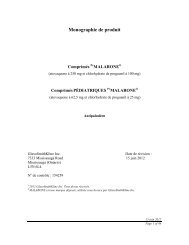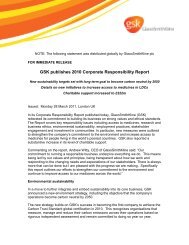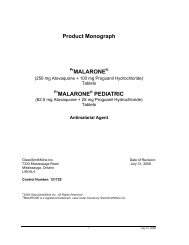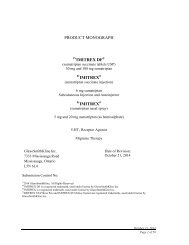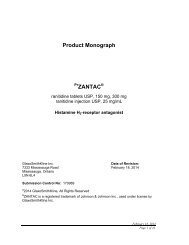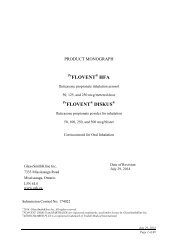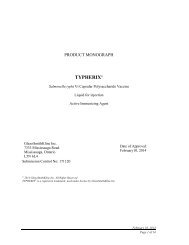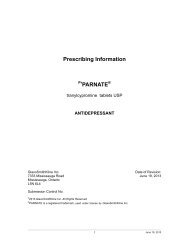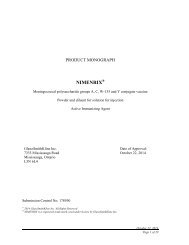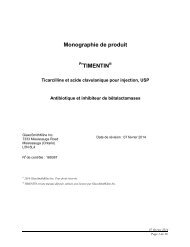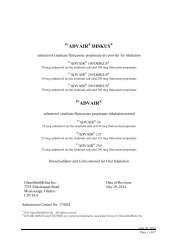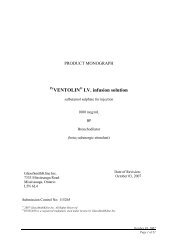Ventolin, Respirator Solution, Nebules - GlaxoSmithKline
Ventolin, Respirator Solution, Nebules - GlaxoSmithKline
Ventolin, Respirator Solution, Nebules - GlaxoSmithKline
You also want an ePaper? Increase the reach of your titles
YUMPU automatically turns print PDFs into web optimized ePapers that Google loves.
CLINICAL TRIALSIn controlled clinical trials, the onset of improvement in pulmonary function was within15 minutes, as determined by both maximum mid-expiratory flow rate (MMEF) andFEV 1 . MMEF measurements also showed that near maximum improvement inpulmonary function generally occurs within 60 to 90 minutes following two inhalationsof salbutamol and that clinically significant improvement generally continues for three tofour hours in most patients. In clinical trials some patients with asthma showed atherapeutic response (defined as maintaining FEV 1 values 15% or more above baseline)that was still apparent at six hours. Continued effectiveness of salbutamol wasdemonstrated over a 13-week period in these same trials.In clinical studies, two inhalations of salbutamol taken approximately 15 minutes beforeexercise prevented exercise-induced bronchospasm, as demonstrated by the maintenanceof FEV 1 within 80% of baseline values in the majority of patients. One of these studiesalso evaluated the duration of the prophylactic effect to repeated exercise challengeswhich was evident at four hours in the majority of patients and at six hours inapproximately one third of the patients.The ability of salbutamol to produce bronchodilation in humans has been demonstrated inmany spirometric and plethysmographic studies. Following a challenge withacetylcholine aerosol, in a study examining the effects of salbutamol in airway resistancefollowing challenge testing in 12 patients, the mean airway resistance increased 250%.After salbutamol aerosol (200 micrograms), the mean airway resistance decreased to 78%of the initial value. Challenges with grass pollen or house dust aerosols in five and eightpatients, respectively, increased activity resistance 265% and 255%, respectively.Administration of salbutamol decreased airway resistance to initial levels.Controlled clinical studies and other clinical experience have shown that inhaledsalbutamol, like other beta-adrenergic agonist drugs, can produce a significantcardiovascular effect in some patients, as measured by pulse rate, blood pressure,symptoms, and/or ECG changes.When salbutamol was administered as a metered-dose inhaler preparation to six normalvolunteers, at doses of three or seven inhalations of 100 micrograms, it was observed thatthree inhalations of salbutamol did not alter serum potassium while seven inhalationsresulted in a decrease in serum potassium from 4.4 to 3.8 mEq/L. Thus, recommendeddoses of salbutamol aerosol (two inhalations) would not be expected to alter serumpotassium levels.A double-blind, placebo controlled comparison of the bronchodilator effects ofsalbutamol, inhaled either as a dry powder or as a conventional aerosol, was carried outin 20 adult patients with chronic bronchial asthma. All treatments were significantlybetter than placebo. There was no significant difference between responses to any of thethree dry powder doses (100 mcg, 200 mcg, 300 mcg) but the average response to200 mcg aerosol was significantly greater than that to 200 mcg dry powder.October 2, 2014Page 17 of 37



